Being Small in a Big World
Posted in: Conservation, Goings on
One of my favorite parts about the field of wildlife biology is that there are basically no rules! Biologists have been trying for centuries to impose order onto the beautiful mess of the natural world. Some patterns and trends have emerged over time, but whenever someone tries to proclaim that something is absolutely true, we find exceptions in the endless variation of life on our planet. The word “rule” is occasionally used in wildlife biology, but much like the pirate’s code, these “rules” are more like guidelines than actual rules.

An Island Fox on Santa Cruz Island, California
One of the most well-known rules in wildlife biology is Foster’s Rule, also known as the island rule. It may be my favorite of the biogeographical rules biologists have come up with, because it highlights the absurdity of trying to make “rules” in this field. In simplified terms, it states that animals on islands may be really really big compared to their mainland counterparts….but also sometimes animals on islands may be really really small compared to their mainland counterparts. Hopefully this helps you understand my earlier comparison to the pirate’s code. An example on the larger side of things would be the Galapagos giant tortoise, the largest tortoise species in the world, and an example on the smaller side of things would be the island fox, which is….almost the smallest fox species in the world? Even with the strange natural selection pressures on an island leading to some very large and very small animals, there is one fox species on the mainland that beats out the tiny island fox: the even tinier fennec fox.

An adult female fennec fox at Safari West
While island foxes can weigh in at ~2.2 – 6.2 lbs, fennec foxes can be as small as ~1.8 – 4.1 lbs fully grown. Other than everyone’s first question, “oh my god they are so cute I can’t handle it can I have one as a pet?”, which we’ll get to in a bit, the big question is: why are they so small? What habitat would have even stranger selection pressures than the extremely limited resources of an island? Many of you may already know the answer: the harsh and unforgiving habitat that is the Sahara Desert in Northern Africa. But why would being small be helpful in one of the hottest, most barren places in the world?

The Mojave Desert in California, similar to fennec fox habitats in the Sahara Desert of Northern Africa
We can find one answer in another biogeographical “rule”: Bergmann’s Rule, which states that warm-blooded animals from colder climates tend to be larger, while their counterparts in warmer climates tend to be smaller. In this rule, fennec foxes follow the trend, while animals like elephants and rhinos are the exceptions and require specialized cooling strategies like wallowing in the mud to make their large size work in a hot environment. The smaller you are, the easier it is to lose heat, which is a definite advantage in the desert! Fennec foxes have an additional adaptation to help them lose heat: their massive ears. Large but thin body parts with lots of blood flow, like these ears, are fantastic for dissipating heat and complement their small body size perfectly in helping them stay cool in a very hot place.
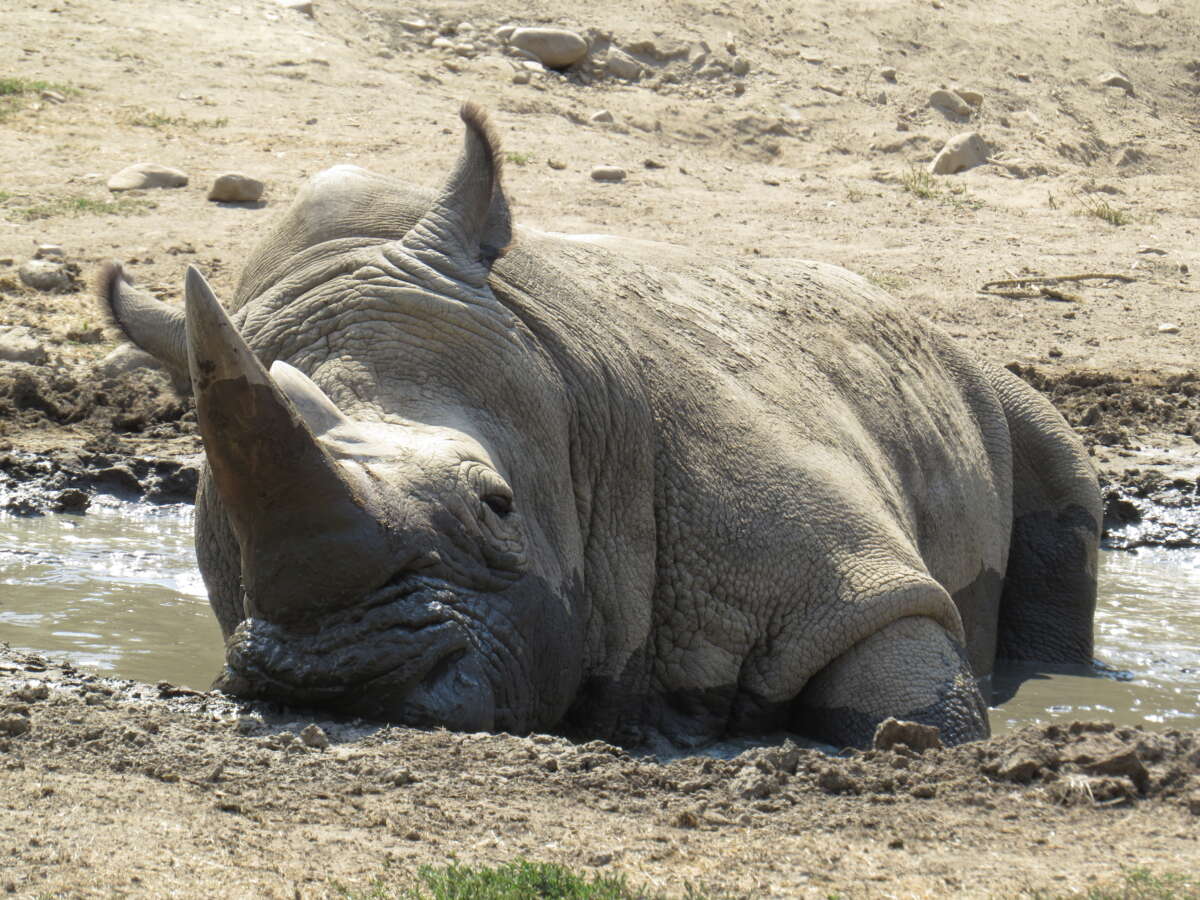
A rhino at Safari West cooling down by wallowing in the mud
Another answer comes from another core concept in ecology: trophic levels. If you’ve ever taken a biology class, you’ve probably seen a pyramid that shows how energy travels up the food chain. Plants, or “producers” are at the base of the pyramid, getting their energy from the sun. Resting on their foundation are animals that eat plants, also known as “primary consumers”. On top of that, we have the animals that eat those animals, known as “secondary consumers”, and so on. Fennec foxes will occasionally supplement their diet with fruits and roots, but they are largely hunting for and eating small rodents, reptiles, insects, small birds, and eggs, putting them on the “secondary consumer” tier of the pyramid.
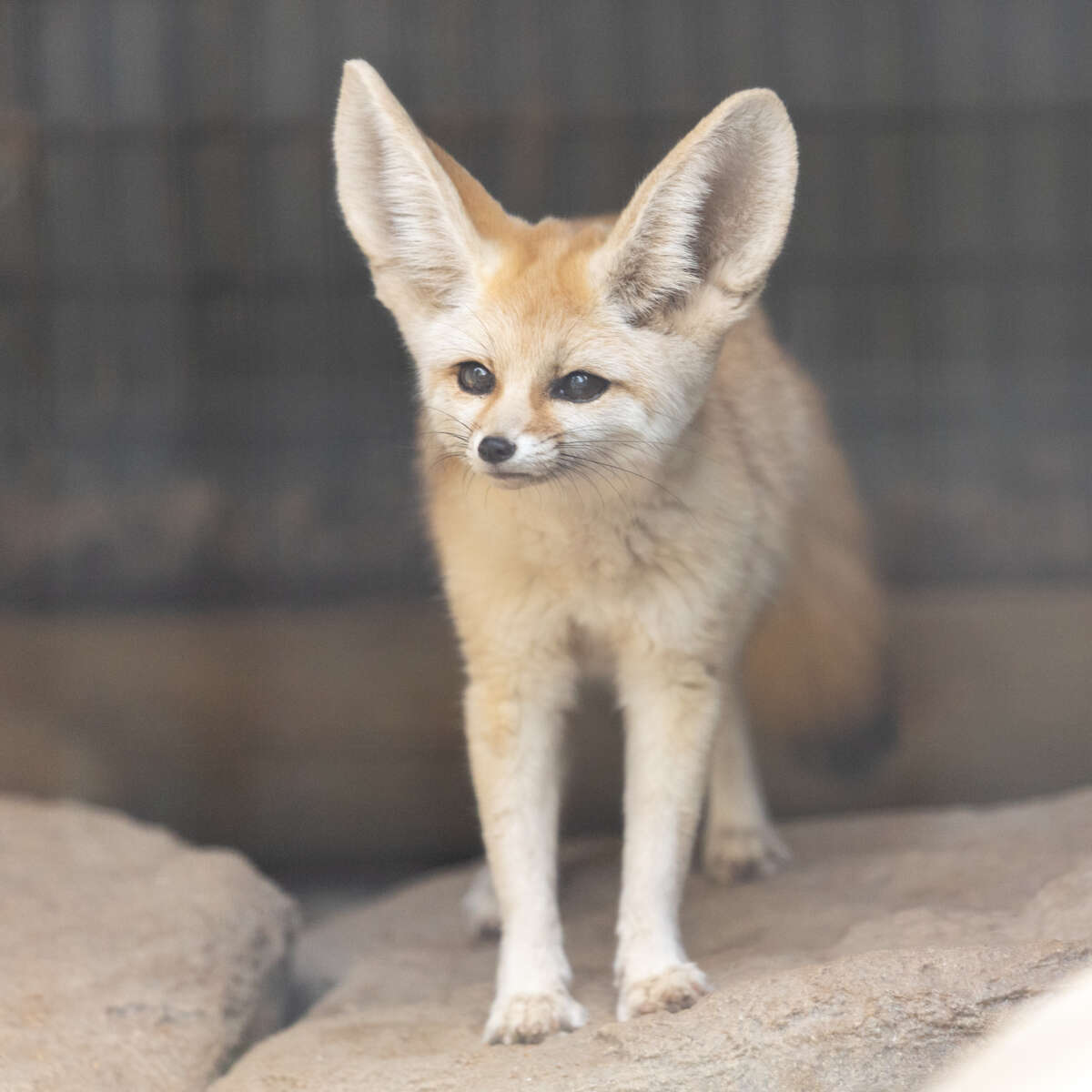
An adult female fennec fox at Safari West
The key takeaway from this trophic pyramid is that only so much energy can travel from one level up to the next, hence the pyramid shape! The further you go up the pyramid, the less individuals you’ll find representing that level in any given habitat. In a desert there is very little water available, so there isn’t much vegetation. In other words, you’re starting off with a pretty small base of your desert trophic pyramid. By the time you get up to the fennec fox’s tier, there just isn’t much energy to go around. Put very simply: there isn’t much food available for predators in the desert, but the smaller you are, the less food you need! This works on a population level as well as an individual level. Not only is a single fennec fox able to get by with less resources than a larger animal—the desert also can support larger groups and a higher density of smaller animals, which is important for a social species like the fennec fox!
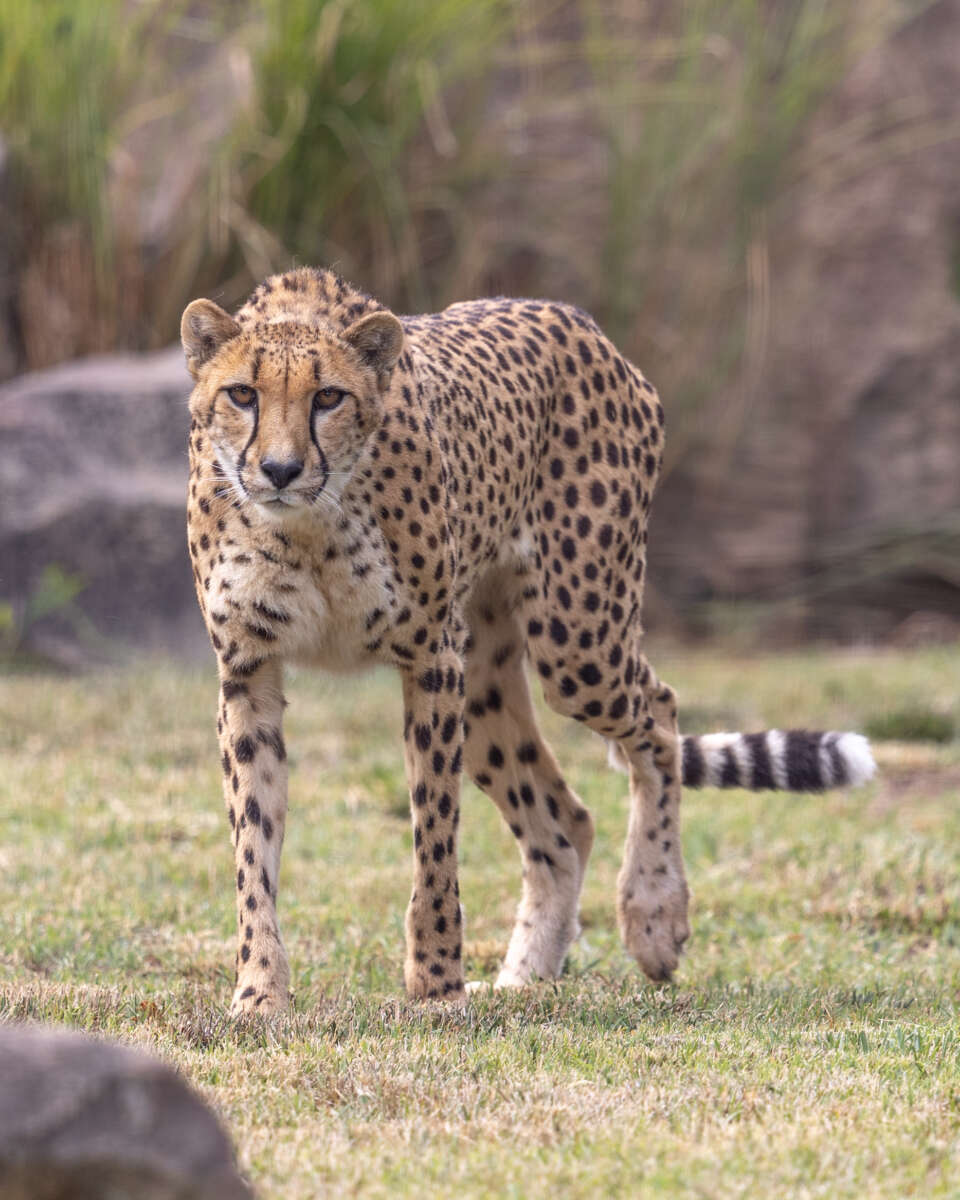
The central Sahara is unable to support larger predators like the cheetah
There may be even more benefits to being small in a desert that we haven’t thought of yet! Fennec foxes will dig complex networks of tunnels underneath the desert sand to stay cool during the day, and it’s certainly much easier to dig a tunnel network that fits fennec foxes than it would be for a larger animal. Can you think of any more benefits to being small in the desert?
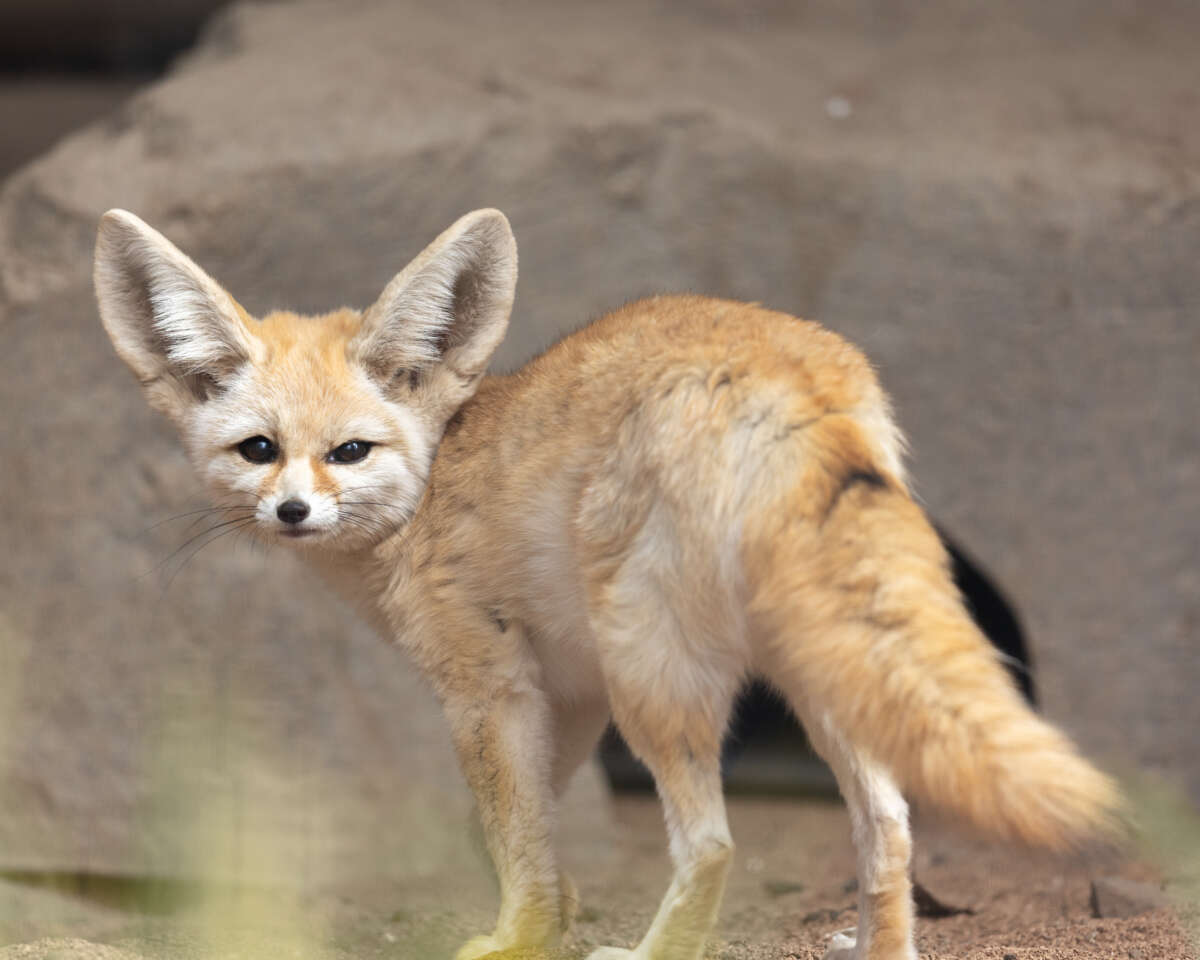
Being small is also great for fitting into small tunnels!
While there are lots of great things about being small in the desert, being tiny isn’t all sunshine and rainbows. The smaller you are, the easier it is to be eaten by larger animals. Thankfully, because of how energy moves up a trophic pyramid as I explained above, there aren’t many larger predators in the Sahara Desert! In parts of the desert that are a bit more habitable, jackals, caracals, and large raptors will prey upon fennec foxes, but in the central Sahara, the fennec fox is the apex predator. So, what is the biggest disadvantage to being small for a fennec fox? Unfortunately, it is people.
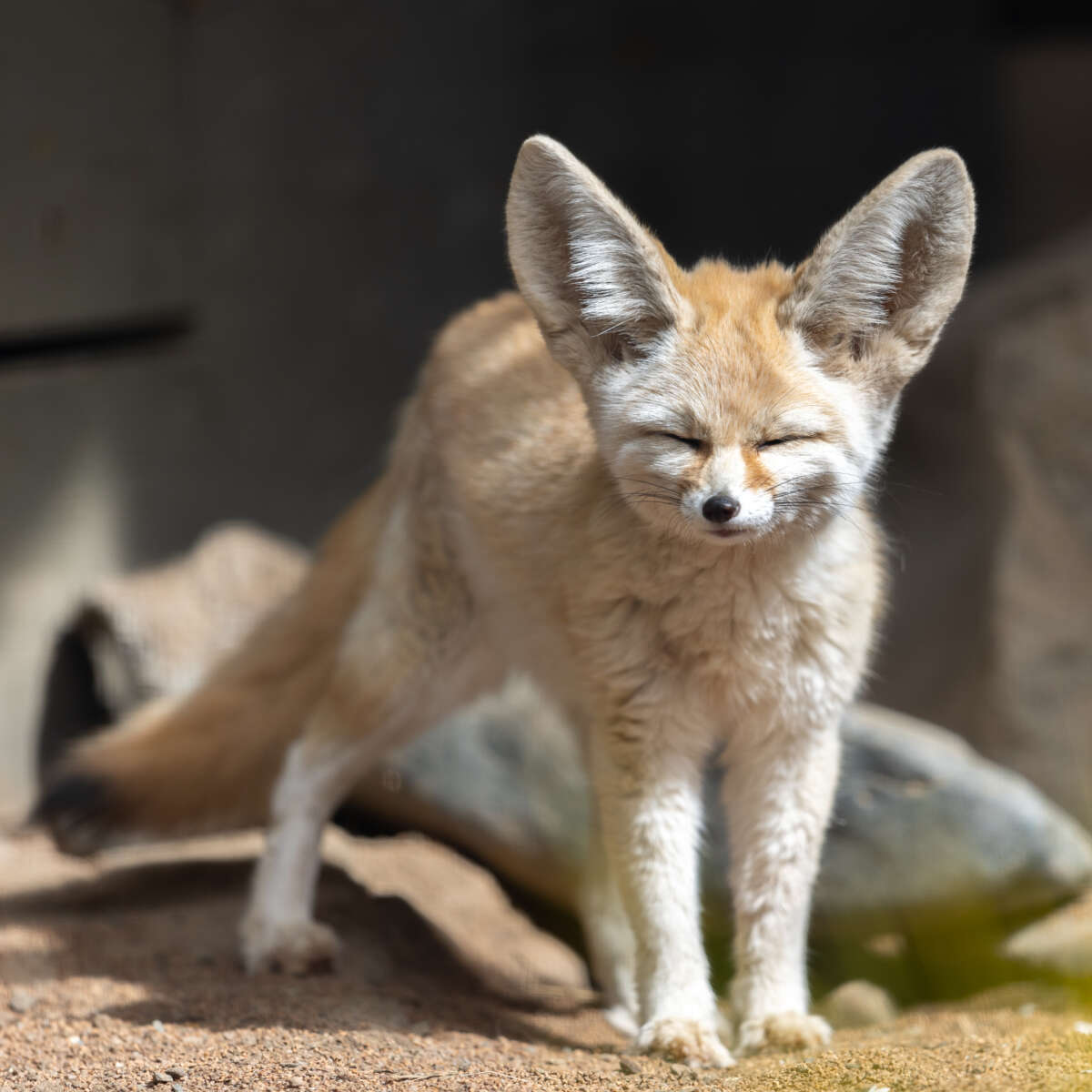
Unquestionably cute.
Humans are biologically driven to find baby animals cute, as the traits of babies trigger our nurturing instincts and push us to take care of our young. The small size and large ears of the fennec fox make it look like a baby animal its entire life, and so naturally people find fennec foxes adorable. This inevitably leads to people wanting fennec foxes as pets. As a species fennec foxes seem to be doing extremely well, and the central Sahara remains a largely untouched stronghold for them. But on the edges of the desert, some populations have disappeared completely because of the pet trade.

I'm cute, but would I make a good pet?
While they are unbelievably cute, in reality, fennec foxes don’t make very good pets. Their nocturnal and crepuscular (active at dawn and dusk) lifestyle means that they want to be active while you are asleep, their burrowing tendencies mean that your couches and carpets won’t last long, and their vocalizations have been described as extremely unpleasant high-pitched squeals and shrieks. So as hard as it is, I urge you to go against your biological tendencies and appreciate these adorable animals without purchasing one as a pet. If you’d like a fennec fox at home, the Safari West gift shop has a fantastic variety of fennec fox plushies that you can bring home with you!

We won't judge if you need this many fennec fox plushies in your life
Our society can place a strange amount of importance on size sometimes. From a fixation on height in dating culture to absurd beauty standards for women, there seems to be a pressure to be one specific, “perfect” way. But out in the wild, animals of all shapes and sizes are thriving. So, in this new year, I hope you take a page out of the fennec fox’s book and find ways to thrive in your body as well. Just like the pirate’s code, society’s “rules” are often more like guidelines than actual rules, and just like the fennec fox, you’re perfect just the way you are.
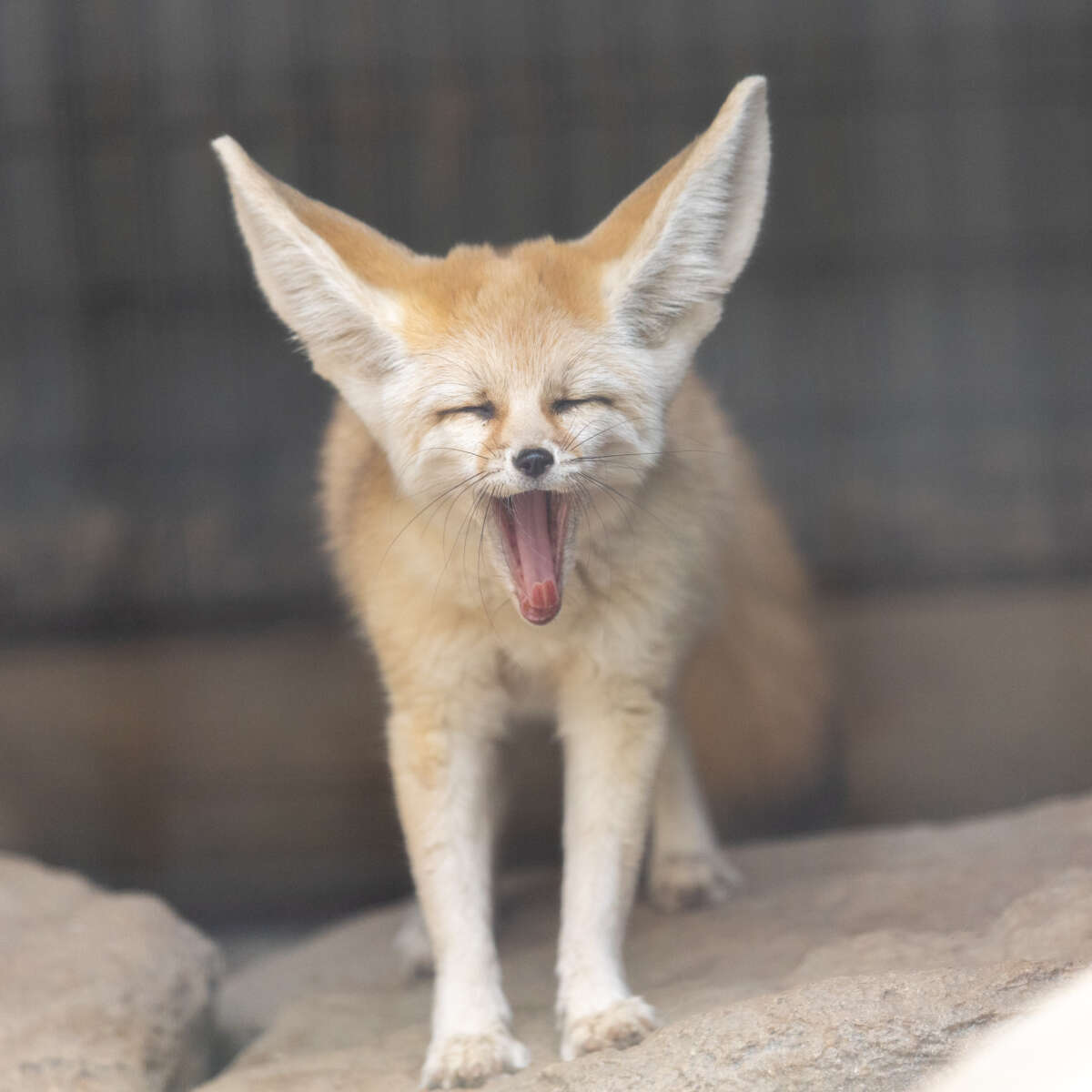
Photos by Mark Pressler


